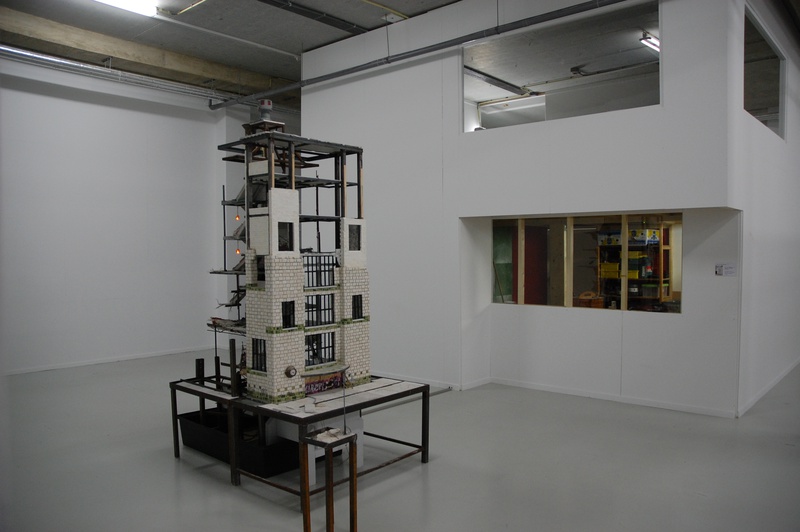Manipulability of human existence is one of the key themes in Erik Sep’s work. Following his own instincts, he recreates the modern world into a detailed miniature city. Interventions that are not feasible in real life are possible on a smaller scale. His work nearly always reflects a certain utopia that is sometimes absurd and sometimes thinkable in reality.
Each building in Sep’s parallel worlds has its own history of origin. Sometimes these histories are mingled, for example when a building that was made earlier is recycled and turned into a new and different building. This way, construction and demolition occur at the same time. Just like in a real city, this does not happen at a pace that has been determined in advance. The process can be extremely fast or painfully slow. What’s more, the outcome is never certain beforehand. By giving in to such a time-consuming development, Sep attempts to struggle free from the fleeting world we live in. This is particularly why he is so interested in architecture: it clearly shows what people’s needs are at any given moment in time. These needs change with every new decade.
Contrary to what we may expect, there are no human figures in Sep’s work. His cities are uninhabited and full of cranes and buildings under construction, as if they are eternally being developed. This makes it easier for the spectator to imagine what it is like to live there; similar to what the visual artist envisaged when he created the artwork. He does provide hooks to explore the work, by suggesting the presence of human beings, for example with lighting, running water or a working lift.
Sep exhibited his work outdoors for the first time during his recent stay in Berlin. His imaginary city could, for the first time, engage with the architecture in the actual surroundings. When choosing his material, Sep has recently started to keep this in mind: more often than before he uses weather proof materials. His work is therefore increasingly acquiring a reality of its own rather than merely being a décor.

